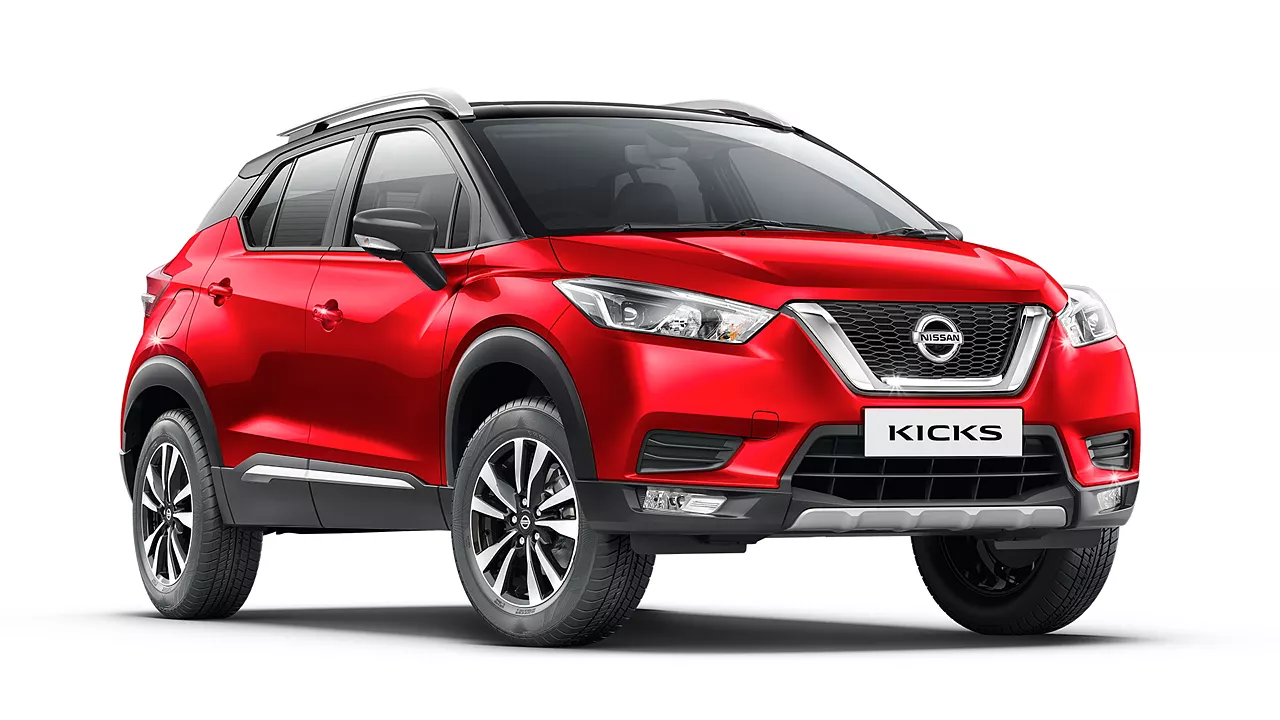Winter can be a beautiful season—but for drivers, it can quickly become treacherous. Snow, sleet, slush, and black ice are all winter hazards that test the traction, drivetrain, and handling abilities of any vehicle.
In regions where snowfalls are frequent and roads are icy for weeks or even months, your SUV’s winter performance can make the difference between confidence and catastrophe.
That’s why understanding which SUVs excel in wintry conditions—and which ones falter—is more than just curiosity; it’s essential knowledge for safety and reliability.
In this two-part guide, we explore both sides of winter SUV performance. First, we highlight five SUVs that shine when the roads get slick, offering advanced AWD or 4WD systems, smart traction control, and excellent ride stability. These models aren’t just functional—they instill confidence when others slow to a crawl.
Then, we shift gears to look at five SUVs that struggle in snowy conditions, often due to poor ground clearance, inadequate AWD tuning, or underwhelming tire performance.
These models might perform well in the city or in dry conditions, but winter exposes their weaknesses.
Whether you’re shopping for a snow-worthy SUV or want to avoid a seasonal headache, this list provides real-world insight into winter traction winners—and disappointments.
Also Read: 5 BMWs That Age Gracefully and 5 That Don’t
5 SUVs With Best Winter Traction
Winter driving can turn even the most predictable SUV into a sliding liability if it lacks the right design features. Slippery roads are not only about snow depth—they involve ice, slush, and temperature fluctuations that affect tire grip and vehicle dynamics.
SUVs that excel in these conditions go beyond just having all-wheel drive. They include intelligent traction management systems, superior weight distribution, and snow-optimized tires—making them top choices for drivers in the snowbelt.
We’ve selected five SUVs that consistently demonstrate outstanding winter traction based on real-world testing, engineering features, and owner feedback in harsh climates.
This list includes a mix of off-road-ready models and well-balanced daily drivers that handle snowy streets like a pro. These vehicles have earned reputations not just for getting through the snow, but for doing it with confidence, stability, and safety.
What makes these SUVs special is not brute power or flashy features, but how well their traction systems are tuned to cope with unpredictability.
Whether it’s an electronically locking differential, terrain management settings, or simply an intelligent AWD setup that knows when to shift torque, these SUVs stand out in conditions where others falter.
We’re writing this guide to help drivers who face regular winter driving and want peace of mind when weather worsens.
If you live in areas like the Rockies, the Northeast, the Midwest, or parts of Canada, these are the SUVs that will keep you moving when others are stuck. Here’s a closer look at the top five performers when snow starts falling.
1. Subaru Outback
The Subaru Outback has long been a staple for winter-bound drivers, and for good reason. Its symmetrical all-wheel-drive system is among the best in the industry, delivering consistent power to all four wheels for balanced traction even in extreme conditions.
Unlike many part-time AWD systems that engage only after slippage is detected, Subaru’s system is always active, distributing torque predictively to maintain control before traction is lost.
Key to its winter prowess is the low center of gravity provided by the flat-four Boxer engine. This contributes to excellent stability, helping the Outback stay planted during tight, icy turns or when descending snow-packed hills.
The standard X-Mode system further enhances control by optimizing engine output, transmission settings, and brake force on slippery surfaces.
There’s even a Snow/Dirt mode tailored specifically for low-traction scenarios, along with Hill Descent Control that gives drivers additional confidence on steep, frozen inclines.
Ground clearance is another major plus. With 8.7 inches of clearance, the Outback easily clears snowbanks and uneven, frozen terrain that might stop other crossovers.
Its suspension is also tuned for rough winter roads, soaking up potholes and icy ruts without becoming unsettled.
Winter tires can be added to nearly any SUV, but what sets the Outback apart is how well the rest of the system works with them. There’s no excessive wheel spin or sluggish response when accelerating from a snowy intersection—the Outback simply grips and goes.
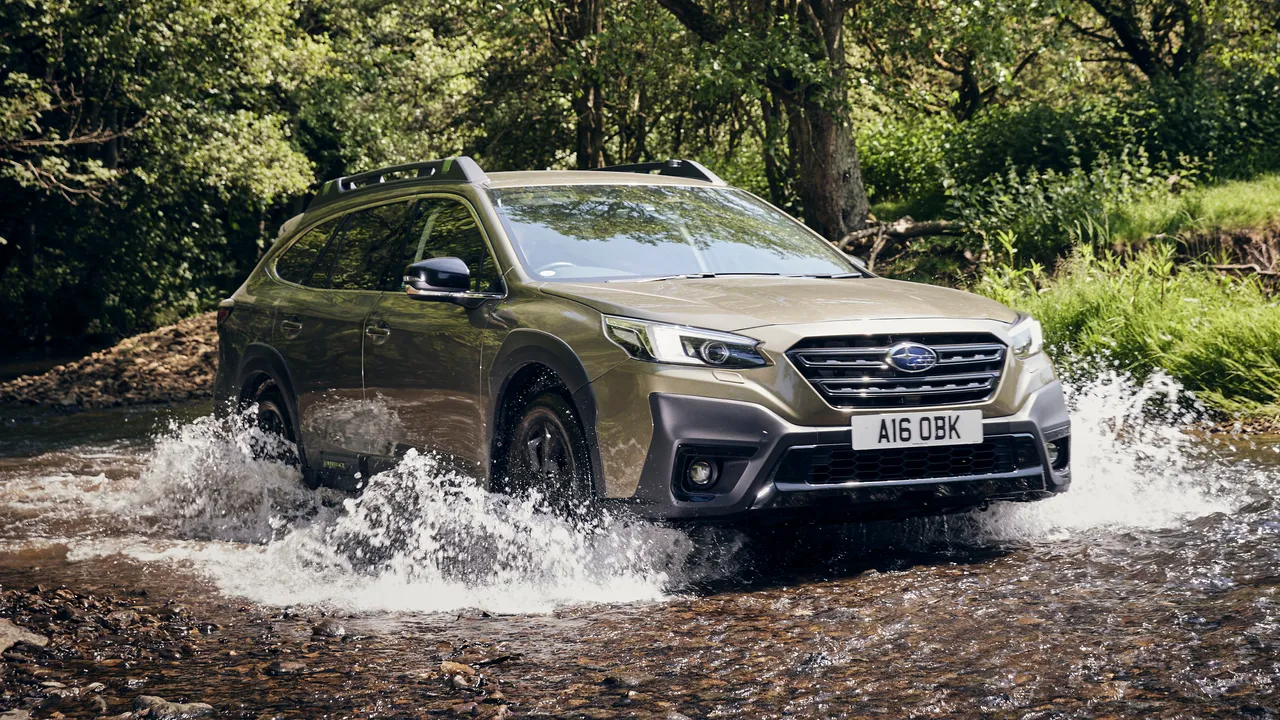
In snow belt states like Vermont or Minnesota, it’s common to see these vehicles dominating snowy backroads and icy commuter routes alike.
Even in blizzards, the cabin remains composed and quiet, and heated front seats, mirrors, and a windshield wiper de-icer come standard or optional on most trims.
For families or outdoor adventurers needing a sure-footed vehicle in the snow, the Subaru Outback continues to be one of the most practical, confidence-inspiring choices on the market.
If winter is part of your lifestyle, the Outback doesn’t just survive—it thrives. This is a vehicle that turns winter from an obstacle into just another season on the calendar.
2. Toyota RAV4 TRD Off-Road
While the Toyota RAV4 is already a popular all-season SUV, the TRD Off-Road trim takes its winter performance to another level.
Equipped with a specialized Dynamic Torque Vectoring AWD system, this model doesn’t just send power to the rear wheels when slippage occurs—it actively shifts torque between the rear left and right wheels to improve grip and stability on icy roads and snow-packed turns.
One of the RAV4 TRD Off-Road’s biggest winter assets is its Multi-Terrain Select system, which includes a dedicated “Snow” mode. When engaged, it adjusts throttle response and traction control to reduce wheel spin on slick surfaces.
The system is intuitive and allows drivers to maintain momentum without overcorrecting or fishtailing, especially when accelerating from a stoplight on packed snow or driving up an incline.
Ground clearance is also winter-ready. With 8.6 inches underbody space, this RAV4 model confidently navigates deep snow or plowed-over curb cuts.
What’s more, the TRD-tuned suspension absorbs winter road imperfections—like ice heaves and potholes—while maintaining strong body control, giving the driver a secure, composed ride even in messy conditions.
Unlike some AWD systems that are more reactive than proactive, the RAV4’s system is highly predictive. It uses input from various sensors—including throttle, steering angle, and yaw—to determine how to distribute power in real time.
This helps keep the vehicle pointed where you want it to go, even during sudden swerves or evasive maneuvers on slick roads.
Toyota also loads the TRD Off-Road with practical cold-weather features. Heated front seats and a heated steering wheel are available, along with heated mirrors and washer nozzles—little touches that make a big difference in winter convenience.

The chunky all-terrain tires included on this trim provide additional bite into snow and slush, further separating it from lower trims or competing compact SUVs.
For those who want a compact SUV that can handle harsh winter conditions without moving into full off-roader territory, the RAV4 TRD Off-Road is a standout.
It blends rugged mechanical grip with smart electronics and comfort-enhancing features, making it a reliable partner when the road disappears under snow.
3. Jeep Grand Cherokee (with Quadra-Trac II or Quadra-Drive II)
The Jeep Grand Cherokee has long held a reputation for blending rugged off-road capability with premium comfort—and nowhere is that more apparent than in its winter traction performance.
Specifically, models equipped with Quadra-Trac II or the more advanced Quadra-Drive II 4WD systems offer some of the most tenacious grip available in a mainstream SUV.
What makes these systems exceptional in winter is their ability to anticipate and adapt. Quadra-Trac II features a two-speed transfer case and uses sensors to monitor wheel slip. It can preemptively redistribute torque before traction is lost, not just after.
Quadra-Drive II, offered on higher trims, adds an electronic limited-slip differential (eLSD) at the rear axle, which can shift up to 100% of torque side-to-side—an invaluable asset on icy or uneven terrain.
The Selec-Terrain system is another major winter ally. With selectable drive modes including Snow, it adjusts throttle sensitivity, shift points, and traction control for slick conditions.
Combine this with the Grand Cherokee’s solid weight distribution and you get controlled, predictable handling in situations where lesser SUVs would be squirming.
Winter comfort features are also top-tier. Heated front and rear seats, a heated steering wheel, remote start, and a windshield wiper de-icing system are available or standard on many trims.
These touches elevate the driving experience, especially during early morning commutes or long trips in sub-zero temperatures.
Ground clearance is generous—especially in models with Quadra-Lift air suspension, which can raise the vehicle up to 10.8 inches to plow through deep snow or clear roadside banks.
At the same time, the ride remains composed and luxurious thanks to Jeep’s well-insulated cabin and smooth suspension tuning.
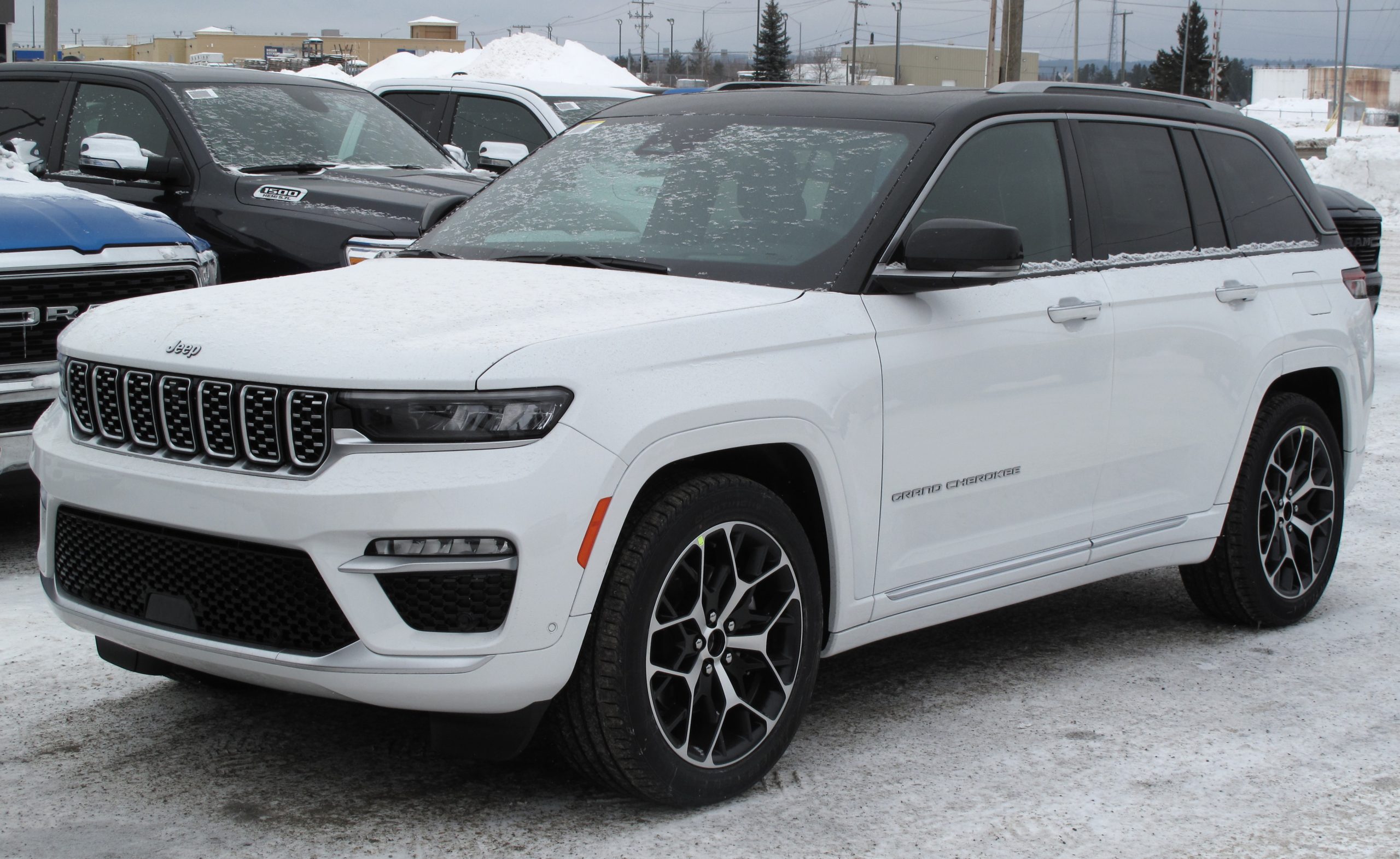
Another advantage is winter tire compatibility and towing ability. Many Grand Cherokee models come equipped with all-season tires that perform admirably in light snow, but switching to snow-rated tires truly unlocks this SUV’s winter potential.
And if you’re hauling snowmobiles or a trailer through tough terrain, its towing capacity—up to 7,200 lbs—is more than enough.
In short, for those who want a winter warrior with serious 4WD hardware and premium amenities, the Jeep Grand Cherokee delivers. It’s not just capable—it’s confident, calculated, and made to conquer whatever winter throws at it.
4. Volvo XC90
When it comes to premium midsize SUVs with true winter credibility, the Volvo XC90 stands out not just for its Scandinavian design but also for its well-engineered AWD system and cold-weather features.
Built with Nordic climates in mind, the XC90 blends luxurious comfort with smart, composed handling in slippery conditions.
The XC90’s AWD with Instant Traction™ is tuned to respond quickly and intelligently to changing road surfaces.
Unlike traditional systems that wait for slip to occur, Volvo’s setup uses sensors to preemptively shift torque between the front and rear wheels, which means better grip from the first wheel rotation—critical when launching from a snowy driveway or maneuvering on black ice.
Where the XC90 really excels is in its chassis balance and ride refinement. The low center of gravity, combined with Volvo’s precise stability control systems, gives the XC90 a confident and predictable feel in slick conditions.
Even during sudden maneuvers or emergency stops on snow-covered roads, the SUV stays impressively composed.
The Drive Mode selector includes settings that tweak throttle response and transmission behavior for smoother performance in low-grip scenarios.
Pair that with Volvo’s optional air suspension, and you have a vehicle that can rise for extra ground clearance or lower for better highway aerodynamics—both of which are handy during long winter trips.
Volvo is also ahead of the curve in winter-focused luxury features. Most trims come with standard heated front seats and offer optional heated rear seats, steering wheel, and windshield washer nozzles.
Add the available four-zone climate control, and everyone stays comfortable no matter how cold it is outside. Large windows, thin A-pillars, and strong LED headlights also provide excellent visibility during snowstorms or dark, overcast afternoons.
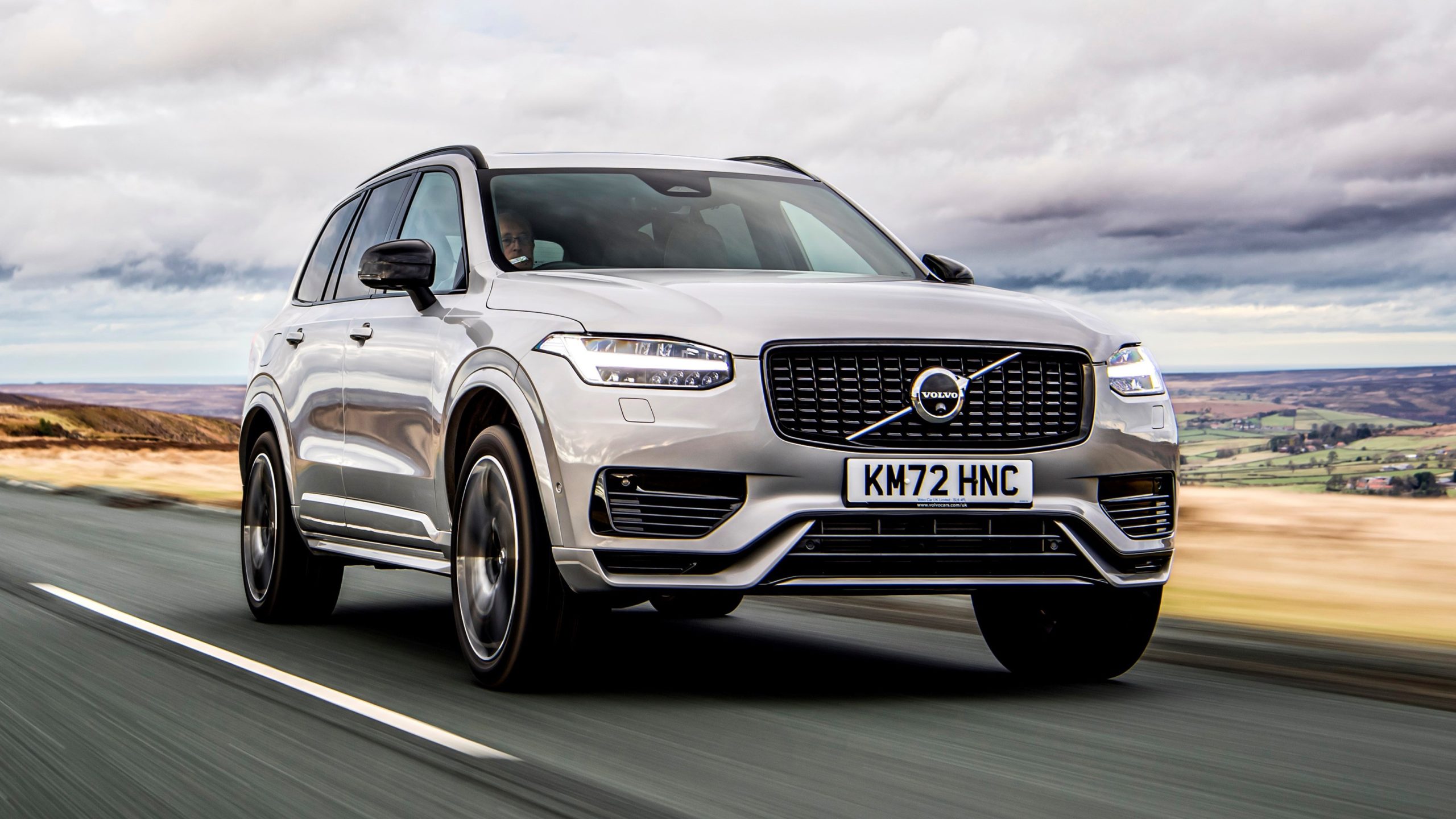
Another winter bonus is Volvo’s emphasis on safety. Features like Run-Off Road Mitigation, City Safety collision avoidance, and Pilot Assist (semi-autonomous driving) all contribute to reduced driver fatigue in stressful weather.
For drivers who want a safe, luxurious, and capable SUV that handles snow with grace rather than brute force, the XC90 is a refined solution. It’s perfect for families, commuters, or anyone facing long winters who doesn’t want to sacrifice comfort for capability.
5. Ford Bronco (with Sasquatch Package or Advanced 4×4)
The Ford Bronco is more than a throwback nameplate—it’s a full-blown, winter-ready beast when equipped with the Sasquatch Package or the Advanced 4×4 system with automatic on-demand engagement.
While much of the spotlight shines on its off-road chops, the Bronco’s cold-weather traction performance is equally impressive, especially in trims designed for rugged terrain and unpredictable conditions.
The Bronco’s advanced drivetrain features automatic 4H (4-High) engagement, enabling the SUV to seamlessly switch between rear-wheel drive and four-wheel drive when slippage is detected.
In trims with the Sasquatch Package, the system is paired with 35-inch Goodyear mud-terrain tires, electronic-locking front and rear differentials, and Bilstein position-sensitive shocks—all of which work together to maximize grip and control on icy, snow-covered roads or unplowed trails.
The vehicle also includes a G.O.A.T. (Goes Over Any Type of Terrain) terrain management system with a dedicated “Snow/Sand” mode. This feature fine-tunes throttle sensitivity, steering, transmission, and traction control to improve handling in slippery environments.
Whether you’re navigating through heavy drifts or slushy highways, the Bronco keeps its composure and maintains traction without excessive wheel spin or fishtailing.
Another strength is its high ground clearance—11.6 inches in Sasquatch-equipped trims. That means the Bronco can easily clear snowbanks, frozen ruts, or even venture off-road in deep powder, where many crossovers would bottom out.
Add in strong skid plates and generous approach and departure angles, and you have an SUV that doesn’t flinch at frozen trails or icy shoulders.
Inside, cold-climate practicality shines through with available heated seats, a heated steering wheel, rubberized floors, and marine-grade vinyl upholstery that can be cleaned of snow and slush with ease.
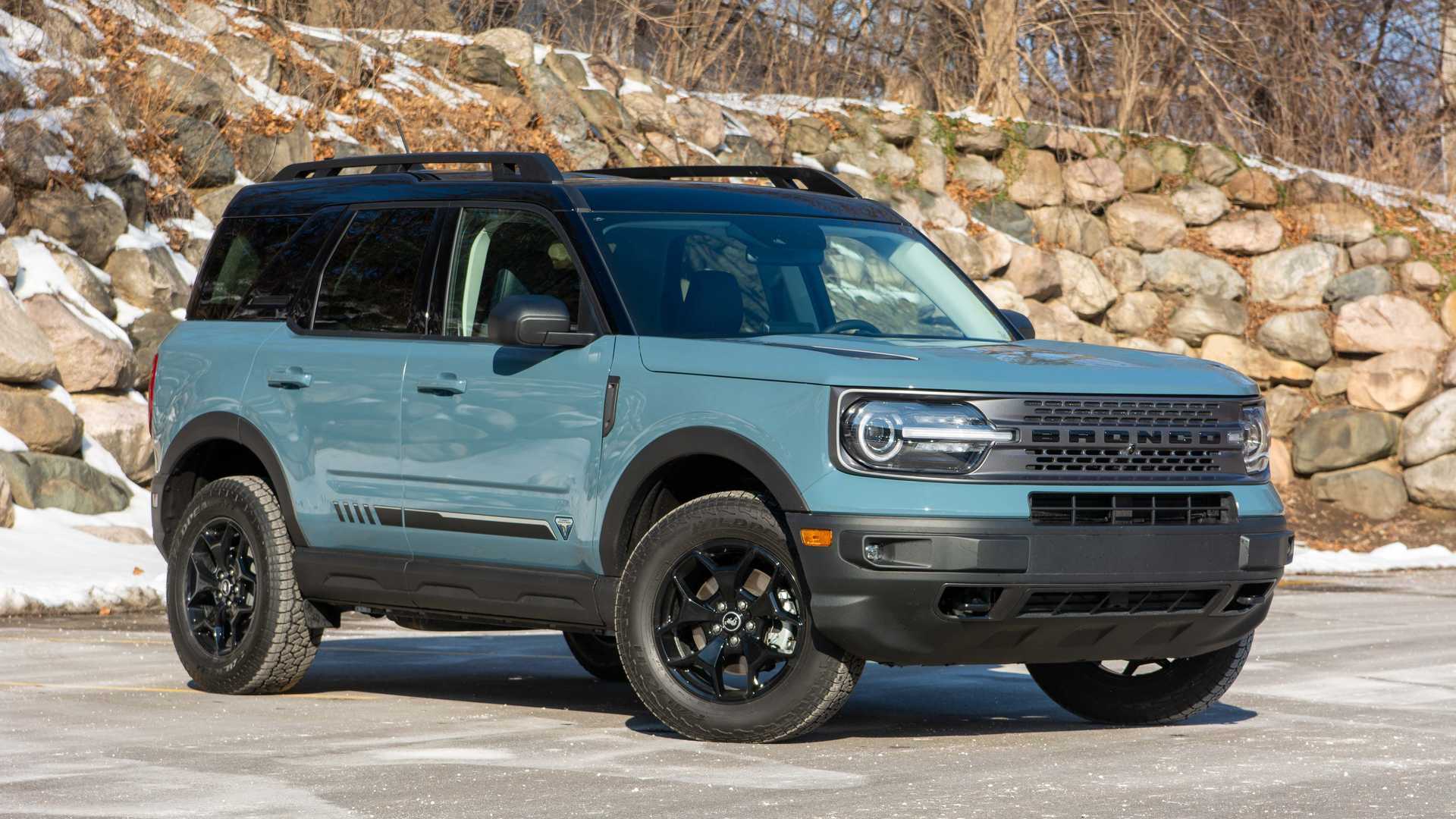
The Bronco’s interior is intentionally designed for rugged, wet environments, which translates directly to winter usability.
While not as quiet or cushy as a luxury SUV, the Bronco brings an unmatched level of winter ruggedness to the table.
It’s perfect for those in mountainous regions, rural snow belts, or anyone who needs more than just AWD—they need a tank on wheels that conquers winter like a true trail warrior.
5 Slipping In Snow
Not every SUV is ready for winter, despite the marketing buzz around “rugged” styling or “all-weather capability.” The truth is, some models fall short when faced with real-world snow and ice.
Whether it’s a poorly tuned AWD system, low ground clearance, or unsuitable tires, these vehicles often look the part—but leave their drivers stranded, sliding, or nervously creeping along while others pass with ease.
We’re not talking about outdated models from decades past—these are modern SUVs that are widely available today, some even popular among buyers.
But when tested in snowbelt states, in icy parking lots, or on snowy suburban roads, their traction systems, drivetrain dynamics, or ride height simply don’t match up to the demands of winter.
Often, they’re too front-wheel-drive dependent, have AWD setups that are reactive rather than proactive, or are let down by OEM tires that prioritize fuel economy over grip.
Many drivers discover these shortcomings only after purchase, during the first heavy snowfall or unexpected ice storm.
That’s why we’ve put together this list—not to bash these vehicles, but to highlight which SUVs struggle in snow, so buyers in colder regions can make informed decisions.
If you live in a mild climate, these might serve you well. But if winter driving is a yearly reality, these SUVs may require costly tire upgrades, extra caution, or outright replacement.
This section is meant to serve as a cautionary guide—vehicles that may perform admirably in city conditions or warmer weather, but whose winter traction flaws become exposed when the road turns white.
We’ll explain what holds each one back, what conditions they’re unsuited for, and what alternatives may serve better.
Now let’s take a closer look at five SUVs that slip, slide, or simply fall short when the snow piles up.
1. Chevrolet Trax
The Chevrolet Trax is an affordable subcompact crossover that checks a lot of boxes for urban drivers—it’s easy to park, budget-friendly, and reasonably fuel-efficient.
But when it comes to winter performance, especially in snowy or icy conditions, the Trax is not a strong contender. Despite offering available all-wheel drive, its real-world snow capability leaves much to be desired.
One of the biggest drawbacks is its basic AWD system, which is reactive rather than proactive. That means it defaults to front-wheel drive and only shifts torque rearward after it detects slippage.
This lag in response can be problematic when trying to pull out of a snow-covered driveway or make a turn on a slick intersection. There’s no terrain management system or dedicated snow mode to refine its behavior in winter conditions.
Another challenge is the Trax’s low ground clearance, which sits at just 6.2 inches. While fine for city streets or light gravel, it struggles to get through deeper snow without scraping or bogging down.
Even a moderately plowed parking lot can become an obstacle for this vehicle, especially if the snow is wet and heavy.
Tires are also a limiting factor. The stock all-season tires prioritize efficiency and ride comfort over cold-weather grip. In real-world winter scenarios, drivers often report significant traction loss under light acceleration or braking.
This means that without investing in a good set of winter tires, the Trax can feel nervous and underprepared on icy roads.
Inside, cold-climate features are limited unless you move to higher trims. Heated seats are optional, and features like a heated steering wheel or heated mirrors are missing entirely on lower models.
That’s a noticeable disadvantage compared to competitors offering better winter ergonomics even in base configurations.
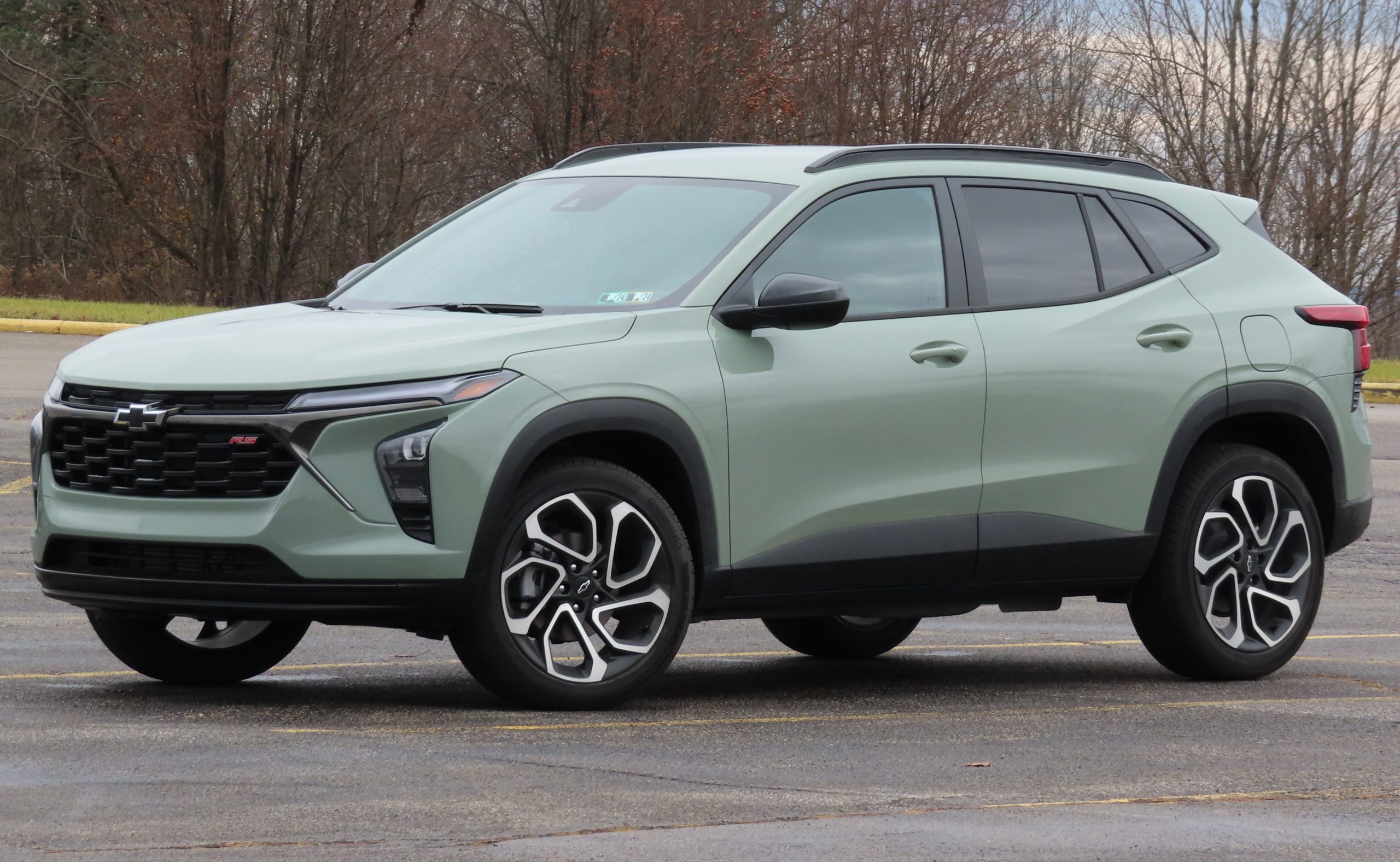
To be fair, the Trax can handle mild winter conditions with caution and the right tires. But if you’re dealing with regular snowfall, black ice, or hills and rural roads, the Trax feels out of its depth.
Drivers in snowy states may find themselves wishing for something with better grip, ground clearance, and more sophisticated AWD logic.
The Trax might be an affordable daily driver, but in the snow, it’s a reminder that not all SUVs are created equal when winter strikes.
2. Mazda CX-30
The Mazda CX-30 is widely praised for its upscale interior, engaging driving dynamics, and sleek design, but when it comes to handling serious winter conditions, it doesn’t quite live up to the SUV promise.
Despite offering Mazda’s i-Activ AWD system across the lineup, the CX-30’s winter traction performance is compromised by a combination of design priorities that favor sporty road feel over cold-weather resilience.
The AWD system in the CX-30 is certainly more advanced than basic reactive setups—it uses sensors to predict slippage and adjust torque distribution accordingly. However, it’s primarily calibrated for spirited dry-weather driving, not deep snow or ice.
The system feels overly cautious when slippage starts and doesn’t provide the aggressive, confidence-inspiring power delivery that drivers need in sudden snowstorms or uphill climbs.
Ground clearance is another limiting factor. At just 6.9 inches, the CX-30 doesn’t ride much higher than a sedan. That makes navigating unplowed side streets or driving through several inches of snow a risky proposition, as you’re more likely to scrape the underbody or get stuck.
It’s especially noticeable compared to rivals like the Subaru Crosstrek, which offers almost two inches more clearance.
The OEM all-season tires are another weak point. They’re clearly tuned for fuel economy and road comfort, but in sub-freezing temperatures and on slippery surfaces, they don’t offer the bite needed for secure traction.
Without a tire upgrade, the CX-30 feels twitchy during turns and hesitant during takeoff—two red flags in winter driving.
Cold-weather creature comforts are available but limited to higher trims. Heated seats are present, but a heated steering wheel, heated mirrors, and windshield de-icers aren’t standard, which puts the CX-30 behind many competitors in terms of winter practicality.
What’s frustrating is that the CX-30 is so capable in fair weather—it corners well, has a premium feel, and delivers solid fuel efficiency.
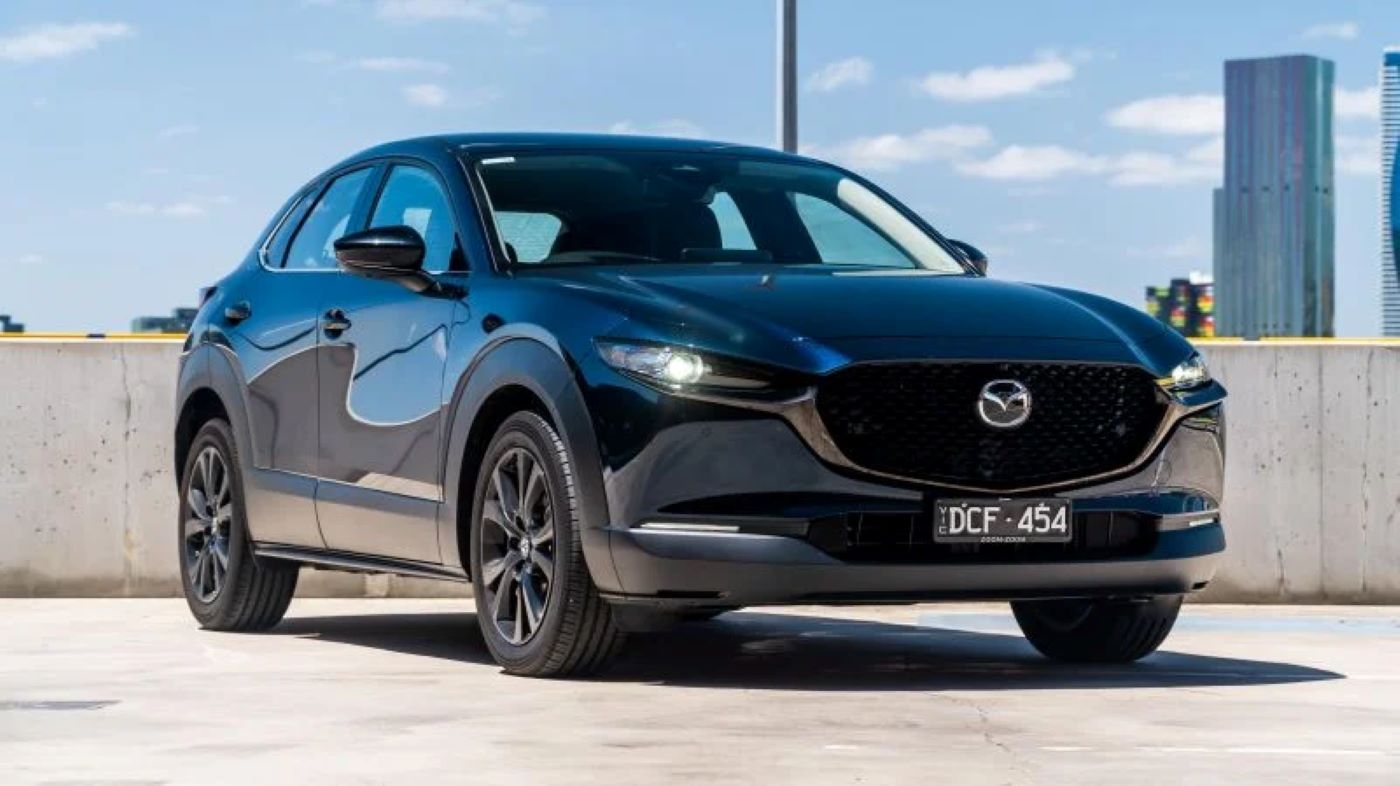
But winter strips away those strengths and exposes the compromises. Drivers in snow-heavy areas may find the CX-30 doesn’t inspire the confidence they need once temperatures drop and roads become unpredictable.
If you live where winters are long and snow is heavy, the Mazda CX-30 may leave you second-guessing its SUV label. It’s elegant and agile—but in the snow, it’s simply out of its element.
3. Hyundai Kona (Non-AWD/Base Models)
The Hyundai Kona is a standout in the subcompact SUV market for its affordability, sharp design, and fun-to-drive character.
But when it comes to winter readiness, especially in its base front-wheel-drive configurations, the Kona reveals serious traction limitations that can catch drivers off guard in snowy or icy conditions.
While AWD is available on higher trims, the majority of Konas sold are front-wheel-drive, especially the entry-level versions.
These models rely entirely on the front wheels for propulsion—a setup that quickly becomes problematic on inclines, slick intersections, or during emergency maneuvers in snow or slush.
Even light snowfall can expose how easily the wheels spin under mild throttle, and braking distances become noticeably longer without the backup of AWD.
The Kona’s low ride height further limits its winter utility. With only 6.7 inches of ground clearance, the vehicle risks bottoming out in deeper snow, and navigating through plowed mounds at driveways or street corners becomes a hassle.
The suspension, while firm and great for city handling, doesn’t absorb rough, frozen surfaces well either—resulting in a jittery, unsettled ride on icy backroads.
One of the biggest culprits, however, is the stock tire setup. The factory-installed all-season tires offer limited winter traction and lack the tread aggression needed for ice or snow-packed surfaces.
Without switching to dedicated winter tires—a must for safe handling in colder climates—the Kona struggles for grip, especially on hills or during sharp turns.
Hyundai does offer some helpful winter features on higher trims, like heated seats, a heated steering wheel, and remote start, but these are absent on the base models most affected by poor traction.
Combined with basic AWD and no terrain management settings, the Kona falls behind many competitors in true winter preparedness.
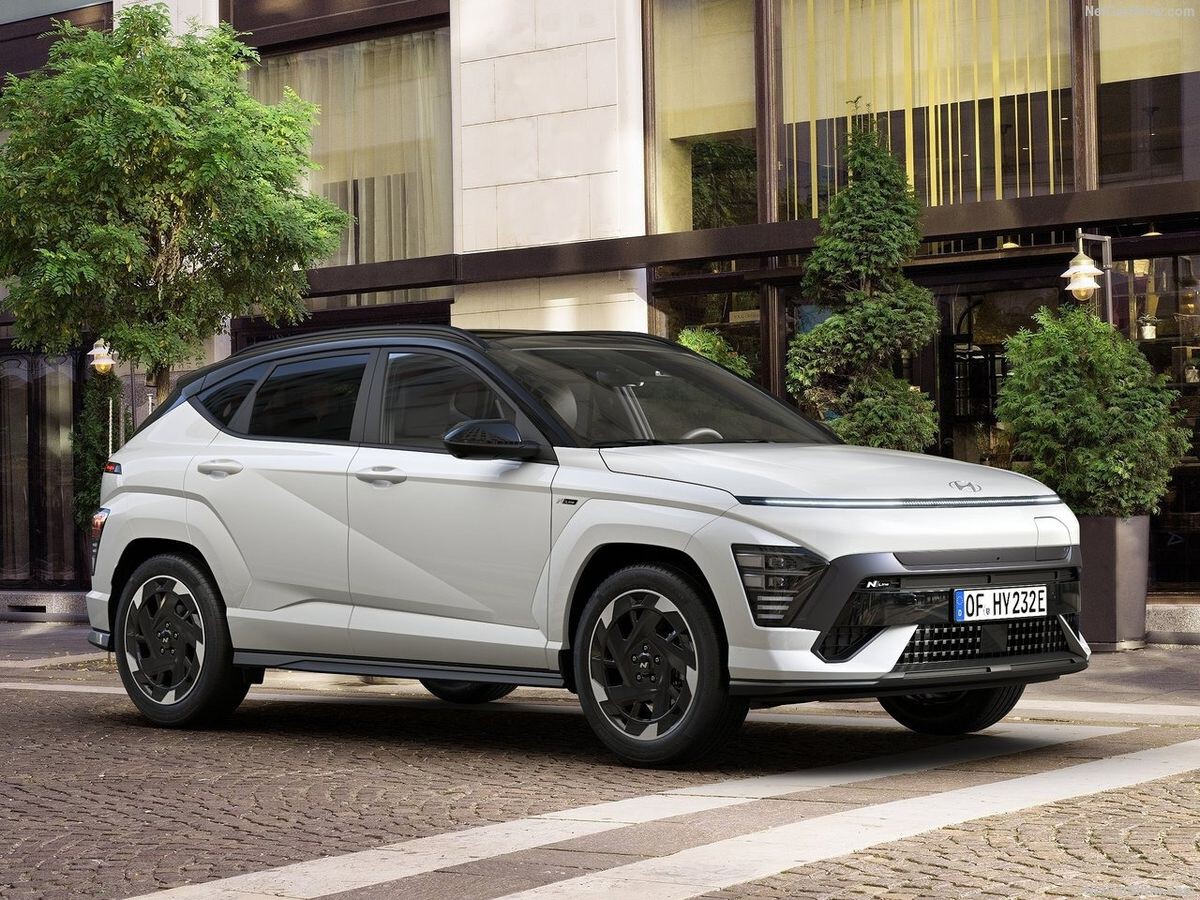
It’s worth noting that the AWD version with proper winter tires can perform decently in snow. But in its common FWD guise, the Kona simply isn’t built for snowy commutes or mountainous terrain.
Buyers in cold climates will likely find themselves needing extra gear—or extra caution—just to keep up with traffic when conditions deteriorate.
In short, while the Kona shines as a stylish, affordable crossover for three seasons, winter exposes its limitations—especially for those who stick with the base setup.
4. Volkswagen Taos (FWD Models)
The Volkswagen Taos has gained traction in the compact SUV segment with its spacious interior, refined driving feel, and Euro-inspired design.
However, when winter weather hits, especially for front-wheel-drive (FWD) versions, the Taos struggles to maintain traction and composure in snow and on icy roads.
The FWD Taos is powered by a 1.5-liter turbocharged engine paired with an 8-speed automatic transmission, but the power delivery can be abrupt under slippery conditions.
The engine’s low-end torque, which makes it feel lively in dry weather, becomes a disadvantage on icy roads—causing wheel spin and light torque steer during even modest acceleration in snow.
Volkswagen offers 4Motion AWD on higher trims, which significantly improves winter grip. But the FWD Taos is the more common configuration and lacks the advanced torque-vectoring capabilities found in the AWD system.
As a result, the vehicle tends to understeer in slick corners and struggles with hill starts or deep snow unless equipped with snow tires—something not all buyers will expect to install on a new SUV.
Ground clearance is another concern. At just 6.4 inches, the Taos rides low for a compact SUV. That’s fine for paved city streets, but it’s a drawback when driving through unplowed snow, navigating side roads, or pulling out of snow-laden parking spots.
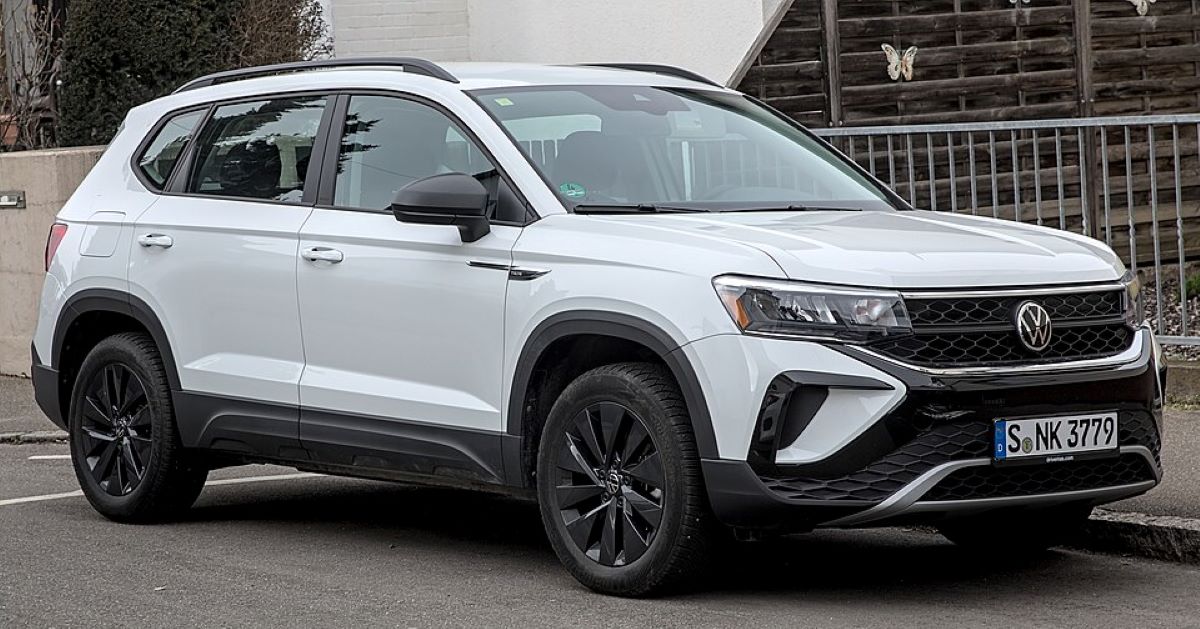
Even moderate snow accumulation can catch the undercarriage, reducing momentum and risking getting stuck.
Another issue is the all-season tires that come standard. While they offer a smooth, quiet ride in warm weather, their winter performance is average at best.
In tests and owner feedback, braking distances increase, and lateral grip decreases noticeably on snow and ice unless upgraded to dedicated winter tires.
Inside the cabin, winter comfort features like heated front seats and heated mirrors are optional, not standard—making the lower trims feel under-equipped compared to rivals like Subaru or Toyota.
There’s also no dedicated snow or terrain mode in the FWD version, which limits driver control in fluctuating winter conditions.
In summary, while the Taos is a comfortable, stylish, and practical SUV for fair weather, the front-wheel-drive variant falls short when winter storms arrive.
For snowbelt drivers, it’s a model best avoided unless you’re willing to invest in AWD and winter tires—or live somewhere with well-cleared roads.
5. Nissan Kicks
The Nissan Kicks positions itself as a fun, affordable, city-friendly crossover—but in wintry conditions, it quickly reveals that it’s more style than substance.
Despite its SUV-like appearance, the Kicks comes in only one drivetrain configuration: front-wheel drive. That alone puts it at a major disadvantage for drivers in snowy or icy climates where all-wheel drive is more a necessity than a luxury.
The Kicks is built on a light-duty platform, more akin to a subcompact car than a rugged utility vehicle. While this helps with fuel economy and urban maneuverability, it results in limited weight over the drive wheels, which affects grip on snowy roads.
Combine that with a modest 122-hp engine and continuously variable transmission (CVT), and you get sluggish throttle response that feels overwhelmed when trying to accelerate uphill or through deeper snow.
Ground clearance is another pain point. At just 7.0 inches, it barely clears anything more than a dusting of snow before the underbody begins to drag or gets stuck. It’s clearly not designed for navigating plowed-in street corners, rural routes, or driveways buried after a storm.
What truly hampers the Kicks in snow is its tire and suspension setup. The narrow OEM all-season tires lack the tread aggressiveness for serious winter grip, and the suspension—tuned for city smoothness—becomes unsettled over icy ruts or frozen patches.
Braking distances increase noticeably, and it tends to fishtail or understeer in slippery turns, requiring drivers to constantly correct their steering.
Nissan offers a few cold-weather features like available heated seats and remote start, but there’s no heated steering wheel or heated mirrors in lower trims.
More importantly, there’s no traction-enhancing technology beyond the basic stability control system—no snow mode, no terrain management system, and definitely no AWD option.
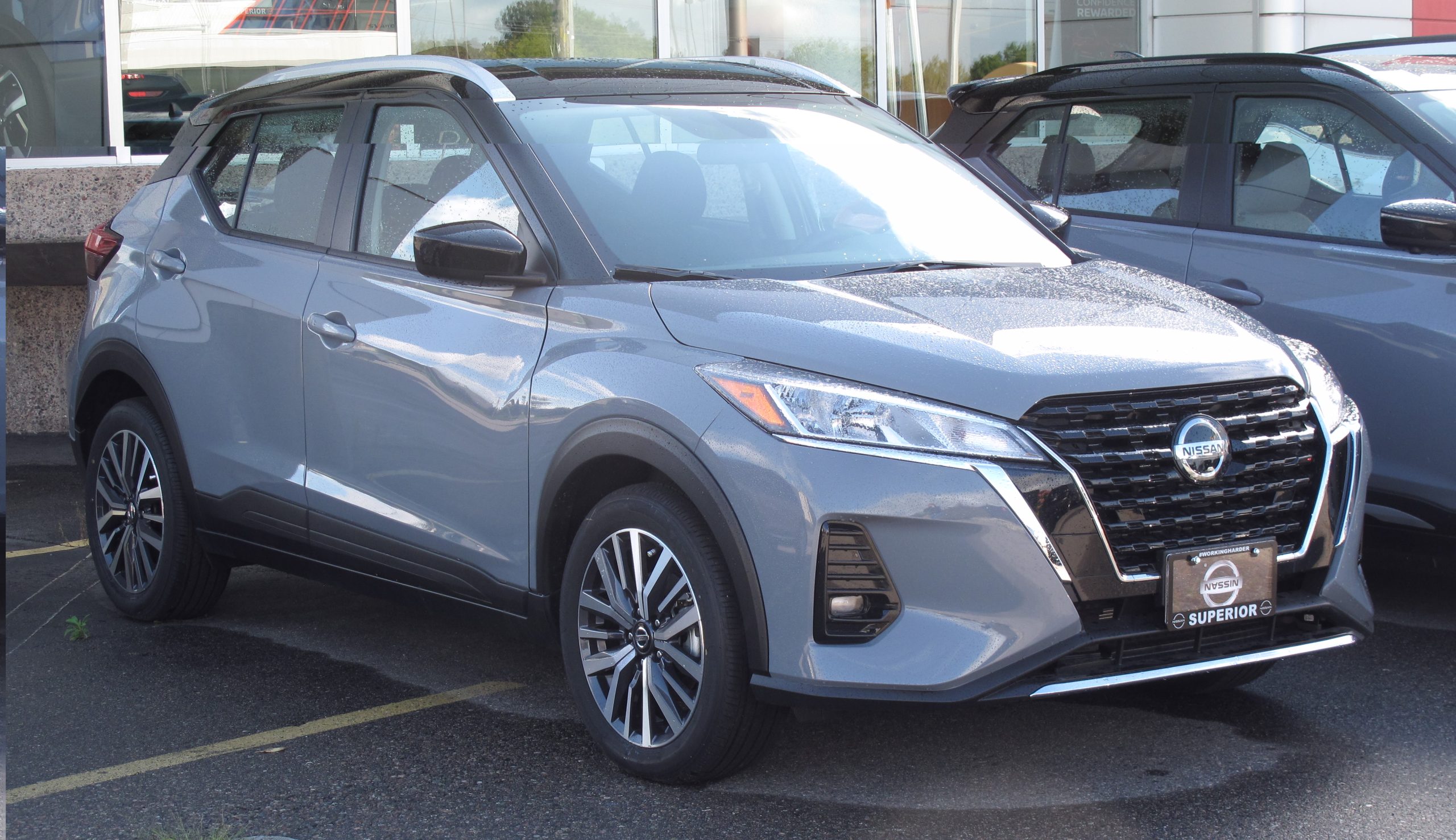
For fair-weather driving, the Kicks makes sense as a stylish, affordable runabout. But in snowbelt states or mountain towns, it simply doesn’t cut it.
It requires either significant upgrades in tires or careful, slow driving in even moderate winter conditions.
If you live in a region where snow and ice are routine, the Nissan Kicks may leave you feeling frustrated—or stuck. It’s a city car in SUV clothing, and winter exposes the gap between appearance and true utility.
Winter driving reveals truths about vehicles that marketing brochures often gloss over. When snow starts falling and roads turn slick, a vehicle’s design, drivetrain, and traction technology are put to the test—and not all SUVs pass.
As we’ve seen, some SUVs stand out as winter warriors, while others, despite their SUV label, struggle in conditions they should be built to handle.
Also Read: 5 Mazdas Known for Engine Endurance and 5 That Fail Fast

